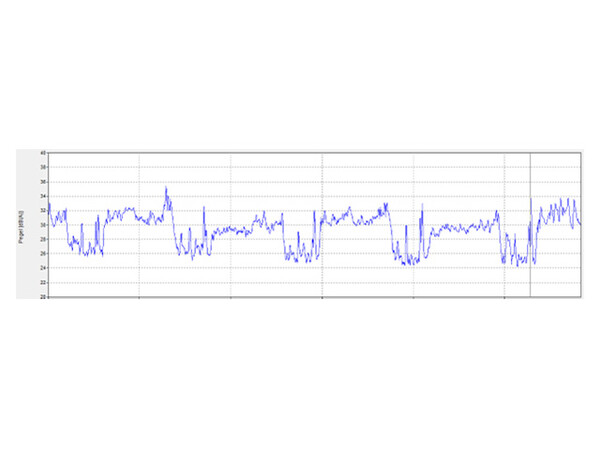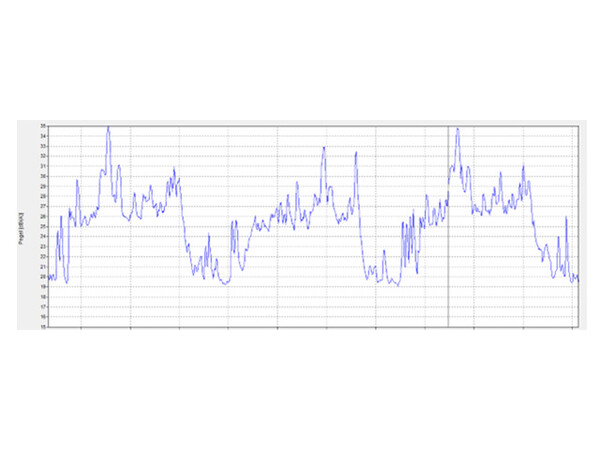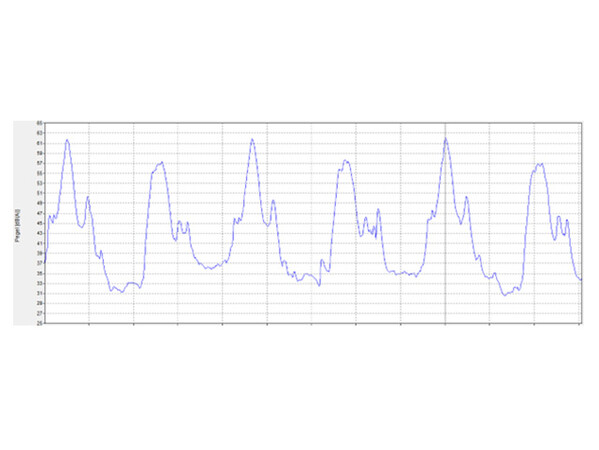Airborne noise emissions on the lift
Up to now, this series has above all dealt with structure-borne noise emissions. This article will discuss and examine airborne noise emissions, taking the requirements of DIN 8989 into account.
By Ulrich Nees and Jan König
DIN 8989 calls for a continuous time recording LAFmax with a sampling rate of ≤ 125 ms to measure airborne noise levels. In lifts with a speed of 1 m/s, eight measurements a second occur at a sampling rate of 125 ms and at a speed of 2 m/s, four measurements a second. In short, at a speed of 1 m/s, measurement occurs every 125 mm and at 2 m/s, every 250 mm.
This is doubtless adequate for measurements of air conditioning systems, toilet flushing, whirlpools and similar building technology systems. For lifts with corresponding dynamic travel behaviour (acceleration, constant travel, deceleration, opening and closing of the doors), a sampling rate of 125 ms is neither appropriate nor good professional practice.
Sampling rate of 10 ms is needed
If measurements occur every 125 mm or 250 mm, not enough usable data is determined, neither during the journey through the shaft nor while passing a landing. This also applies to the noise level measurement during opening and closing of the door. At a reduced sampling rate of 50 ms, a measurement occurs every 20 mm and at a sampling rate of 10 ms every 10 mm. As tests have revealed, a sampling rate of 10 ms is needed to detect possible disturbance and deduce related solutions.
 Diagram 1: Travel of the car through the lift shaft. Photo: © Ulrich Nees / Jan König
Diagram 1: Travel of the car through the lift shaft. Photo: © Ulrich Nees / Jan KönigSome of the most important measurements to describe quality of a lift are the trips through the shaft according to DIN 8989. Short sampling intervals (10 ms) guarantee that potential disturbance frequencies are registered and corresponding measures can be taken to reduce airborne and structure-borne sound.
The following diagrams show measurements according to DIN 8989 of a lift to determine the noise pressure level emitted.
Results regarded critically
 Diagram 2: Journey of the car passing the landing. Photo: © Ulrich Nees / Jan König
Diagram 2: Journey of the car passing the landing. Photo: © Ulrich Nees / Jan KönigNoise transmission while passing the landing (diagram 2) and when opening and closing the door (diagram 3) can occur via the flat entrance door into the room deserving protection. Targeted measures to reduce the airborne and structure-borne noise level can only be taken if all influence variables are evaluated.
The permissible noise pressure levels are listed in DIN 8989 / Table 3 "Noise emission values of lifts to be observed to achieve the noise protection targets according to Section 5". These depend on the location of the room in need of protection in relation to the lift shaft and the noise protection target according to DIN 4100 [LAFmax,n] or VDI 4100 [LAFmax,nT].
 Diagram 3: Opening and closing of the car and landing doors at the landing. Photo: © Ulrich Nees / Jan König
Diagram 3: Opening and closing of the car and landing doors at the landing. Photo: © Ulrich Nees / Jan KönigUnfortunately, the sample rates to measure the noise level required in DIN 8989 and the resulting quality determination of a lift, are usually unsuitable for this. This should be borne in mind in the field and the results achieved in this regard be regarded critically.
The next article will deal with travel quality based on ISO 18738. Measurements according to the standard offer considerably more than those according to DIN 8989.
Jan König is the proprietor of the engineering firm (VDI) Ing4Lifts.
Ulrich Nees is the proprietor of "Aufzug-Systeme + Beratung Ulrich Nees".
Definition: The noise level measurements to determine the quality of a lift are the trips through the lift shaft, passing a landing and the opening and closing of the car-/ landing door.

























Write a comment